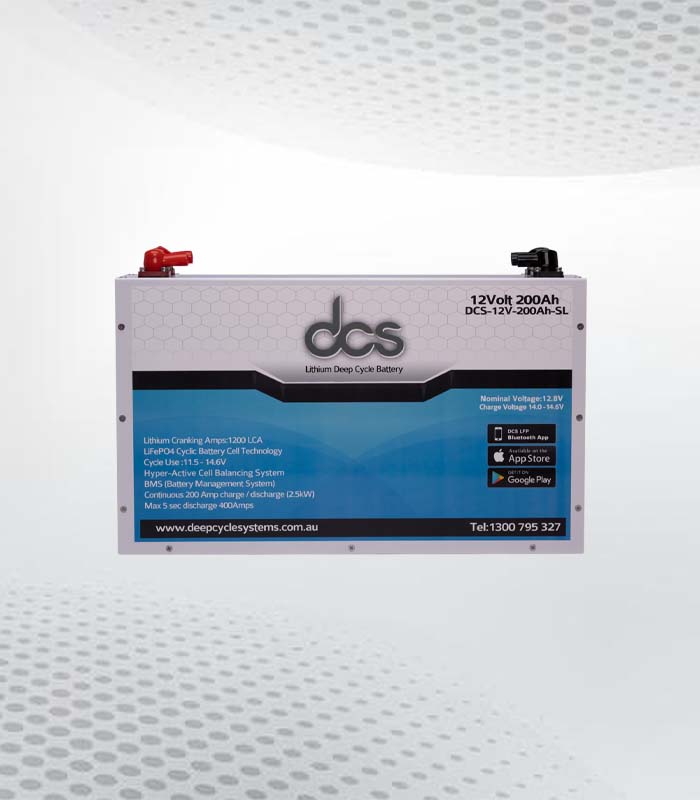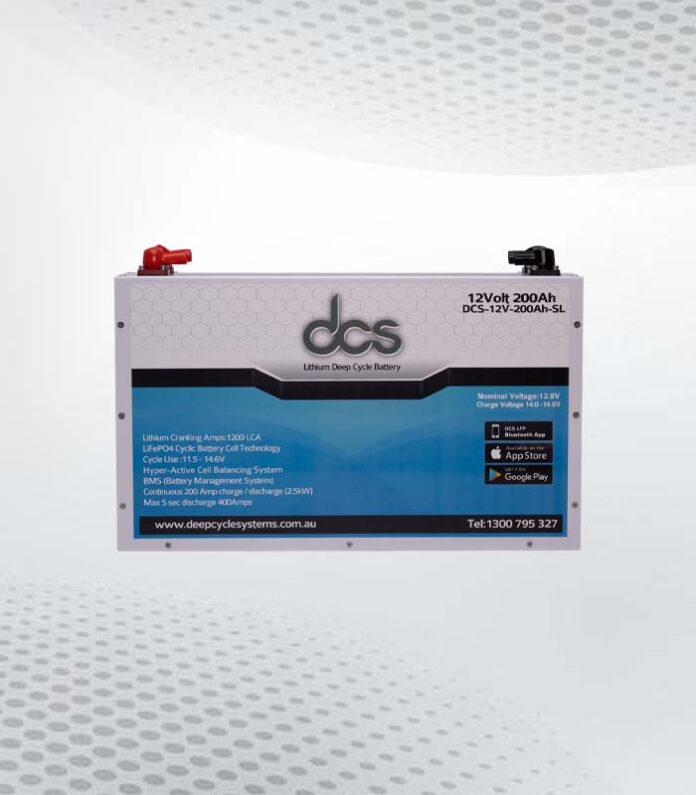Deep-cycle batteries are a staple in various applications, from solar power systems and electric vehicles to marine electronics and camping trailers. They offer a reliable power source and a longer lifespan, but how do we understand their capacity? This is where the term ‘Ampere-hour (Ah)’ comes into play. It’s crucial to understand this measurement when dealing with deep-cycle batteries. This guide is designed to offer a comprehensive insight into mastering the deep cycle battery Ah.
Understanding the Concept of Amp-Hours
The Ampere-hour (Ah) is a unit of measurement used to define the storage capacity of a battery. Specifically, it represents the amount of current a battery can deliver continuously for one hour. For example, a 120Ah deep-cycle battery can theoretically supply a continuous current of 120 Amps for an hour before it is completely drained. This is, of course, under ideal circumstances assuming that the battery is fully charged and new. However, in practice, completely discharging a deep-cycle battery can lead to a significant reduction in its lifespan.
Therefore, it is more typical to consider the Ah rating in the context of the battery’s capacity to supply a lower current over a longer period. For instance, that same 120Ah battery could supply a 30 Amp current for four hours. This correlation is not always linear, though. The actual capacity can change with the rate at which the battery is discharged, a phenomenon known as the Peaker effect.
This effect suggests that the faster a battery is discharged, the lower its effective capacity will be. Thus, it’s crucial to consider the discharge rate alongside the Ah rating when assessing a battery’s suitability for your requirements. To put it simply, understanding the Ah rating provides a basis for estimating how long a battery can deliver a certain amount of current, helping you plan energy usage effectively.
Determining the Ah Rating of 120 amp Deep Cycle Battery
Identifying the Ah rating of a 120 amp deep cycle battery requires consideration of certain essential factors. Primarily, you need to factor in the power demand of your system or device, alongside the amount of time you want it to run before recharging. Suppose you’re using a device that consumes 30 amps per hour and you wish it to run for four hours without interruption. In that case, you will need a battery with an Ah rating of at least 120Ah.
However, it’s crucial to bear in mind that the Ah rating is not the only determinant of a battery’s suitability for your needs. Other elements such as the battery’s lifespan, recharge rate, discharge rate, and maintenance needs should also be weighed up. Therefore, while a 120Ah deep-cycle battery may seem apt in terms of power requirements, it might not be the optimal choice when other factors are taken into account.
It’s important to note that a battery’s Ah rating is typically determined under specific conditions, usually at a moderate temperature of around 25°C. Fluctuations in environmental temperature can affect a battery’s actual capacity, meaning its real-world performance might deviate from its rated Ah capacity. Therefore, the actual power needs and operating conditions should be assessed comprehensively when determining the most suitable battery for your application.
Importance of Ah in Battery Selection
Choosing the appropriate Ah rating is a key aspect when selecting a deep-cycle battery. The Ah rating signifies the battery’s storage capacity, providing a clear indication of the length of time a battery can run before it needs recharging. Selecting a battery with an inadequate Ah rating may result in insufficient power for your needs, whereas a battery with an excessive Ah rating may be unnecessarily large, heavy and expensive. A proper assessment of your power needs is pivotal in determining the right Ah rating.
To do this, calculate the total power consumption of your device or system, and then consider how long you need it to run before recharging. For instance, if a device uses 20 amps per hour and needs to run for 6 hours without recharging, you will require a battery with an Ah rating of at least 120Ah. However, it is important to note that other factors should be considered alongside the Ah rating. These include the battery’s lifespan, discharge rate, recharge rate, and maintenance requirements. Also, bear in mind that environmental conditions, particularly temperature, can significantly impact a battery’s actual capacity.
Maintenance Tips for deep cycle battery 120 amp hours
Regular upkeep is vital to ensure the longevity and efficient operation of your deep cycle battery 120 amp hours. Always keep the battery clean, dry, and free of dust or debris. Moisture and dust can lead to corrosion, which may impair battery function. A clean, dry cloth is suitable for wiping down the battery. Secondly, avoid over-discharging. As discussed earlier, repeatedly discharging your battery to 0% can degrade its capacity over time.
Endeavour to recharge the battery once it reaches around 50% capacity. The third maintenance tip is to monitor battery fluid levels. For wet-cell deep-cycle batteries, ensure that the electrolyte level is maintained. It should be kept above the plates but below the vent well’s bottom. Never let the electrolyte level drop so low that the plates are exposed as this can lead to permanent damage.
Fourthly, keep your battery adequately charged. Storing a battery in a discharged state can cause sulphation, reducing its lifespan. To prevent this, make sure your battery is charged immediately after use or at the very least, once every six months. Lastly, routinely inspect the battery’s physical condition. Check for signs of damage, such as bulges, cracks or leaks. If you notice anything amiss, it’s best to seek professional assistance as continuing to use a damaged battery can be hazardous.
The Impact of Temperature on Battery Ah
Whilst deep-cycle batteries are robust and resilient, they are not entirely immune to the influence of environmental conditions, particularly temperature. The performance and capacity, indicated by the Ah rating of a battery, can be significantly affected by extreme temperature fluctuations. When operating at a moderate or ‘normal’ temperature, typically around 25°C, a battery can deliver its full stated capacity. However, as the temperature deviates from this optimal level, the Ah capacity starts to change. In colder conditions, a battery’s capacity tends to decrease due to the slowed chemical reaction within the battery.
This reduction directly impacts the Ah rating, decreasing the amount of power the battery can provide over a set duration. For example, a battery with a capacity of 120Ah at 25°C could potentially deliver only about 80Ah at 0°C. Conversely, elevated temperatures can temporarily increase a battery’s capacity, seemingly boosting its Ah rating. However, this is no cause for celebration. Excessive heat accelerates the internal chemical reaction, leading to increased wear and tear. This could result in a quicker degradation of the battery’s health, reducing its overall lifespan.
Applications of 120 amp hour deep cycle battery
A 120 amp hour deep cycle battery is an extremely versatile power source, finding use across a diverse array of applications. Being capable of providing a continuous supply of power over an extended duration, these batteries are often the preferred choice for off-grid power systems. Whether it’s solar energy set-ups or camping trailers, the enduring performance of these batteries is particularly advantageous. Their utility isn’t confined to just off-grid scenarios.
They are equally effective in electric vehicles, offering dependable power over a long journey without the need for frequent recharging. In the realm of marine electronics too, where reliability and longevity are crucial, 120Ah deep-cycle batteries deliver consistent performance. These batteries also play an important role in backup power systems.
 In situations where power failure is not an option, like hospitals or data centers, the long-lasting power supply from a 120Ah deep-cycle battery is of paramount importance. Thus, the 120Ah deep-cycle battery serves a plethora of applications, demonstrating a blend of versatility, reliability and endurance. From off-grid set-ups and electric vehicles to marine electronics and backup power systems, these batteries continue to be a reliable ally in ensuring uninterrupted power supply.
In situations where power failure is not an option, like hospitals or data centers, the long-lasting power supply from a 120Ah deep-cycle battery is of paramount importance. Thus, the 120Ah deep-cycle battery serves a plethora of applications, demonstrating a blend of versatility, reliability and endurance. From off-grid set-ups and electric vehicles to marine electronics and backup power systems, these batteries continue to be a reliable ally in ensuring uninterrupted power supply.
Charging and Discharging Ah: A Balanced Approach
Implementing a balanced approach to charging and discharging your deep-cycle battery can optimize its performance and longevity. It starts with understanding the battery’s charge and discharge cycles. Essentially, a charge cycle is a process of charging a battery from 0% to 100% and discharging it back to 0%. An optimal balance lies in avoiding extremes, both in charging and discharging. Overcharging can lead to excess heat generation, causing internal damage and reducing the battery’s lifespan. A smart charger, one that automatically switches to a float or maintenance charge once the battery is fully charged, can help prevent this.
On the other hand, discharging a battery to 0% consistently can significantly degrade its capacity over time. As a rule of thumb, you should commence recharging once the battery depletes to around 50% capacity. Using a battery monitor can assist in tracking the state of charge, helping you maintain this balance? It’s also worth mentioning that the rate at which you charge or discharge your battery can impact its Ah capacity. A slower rate usually means more efficient energy storage, whereas a faster rate can lead to a decrease in the overall Ah capacity.
FAQs
Q1: How do I know if my battery’s Ah rating is sufficient for my needs?
A: This depends on the power demands of your device or system. For instance, if your device consumes 50 Amps per hour, a 120Ah battery will sustain it for roughly 2 hours before requiring a recharge.
Q2: Is it possible to increase the Ah rating of a deep-cycle battery?
A: Unfortunately, you cannot increase the Ah rating of a battery. However, you can connect batteries in parallel to combine their Ah capacities and achieve a longer run time.
Q3: What is the difference between a deep cycle battery Ah and a regular battery?
A: A deep cycle battery AH is designed to provide sustained power over an extended period and tolerate repeated discharging and recharging cycles. Regular or starting batteries, on the other hand, are designed to provide a high current burst for a short period, typically to start an engine.
Q4: Can deep-cycle batteries be used at any temperature?
A: Although they are robust, deep-cycle batteries are still susceptible to extreme temperatures. Both high and low temperatures can negatively impact the battery’s Ah capacity and overall performance.
Q5: What does the ‘C’ rate mean about Ah?
A: The ‘C’ rate refers to the rate at which a battery is discharged relative to its maximum capacity. For instance, a 1C rate means that the discharge current will discharge the entire battery in one hour. This is tied to the battery’s Ah rating as it affects the rate at which the battery can be safely discharged.
Conclusion
The essence of fully grasping the Amp-hour concept within deep-cycle batteries is rather straightforward. It’s a foundational aspect that assists in choosing, sustaining, and efficiently utilizing your battery. By comprehending the significance of the Ah rating, acknowledging the influence of temperature, and adopting correct charge and discharge methods, you can maximize the efficacy and lifespan of your battery. This ensures a dependable, long-lasting power supply tailored to your specific requirements. Embracing these practices will guarantee that you can optimize the use of your deep-cycle battery, securing a consistent energy source and providing a strong return on your investment.
| Related Business Listings |
| Contact Directory |
| Local Business Profiles |


